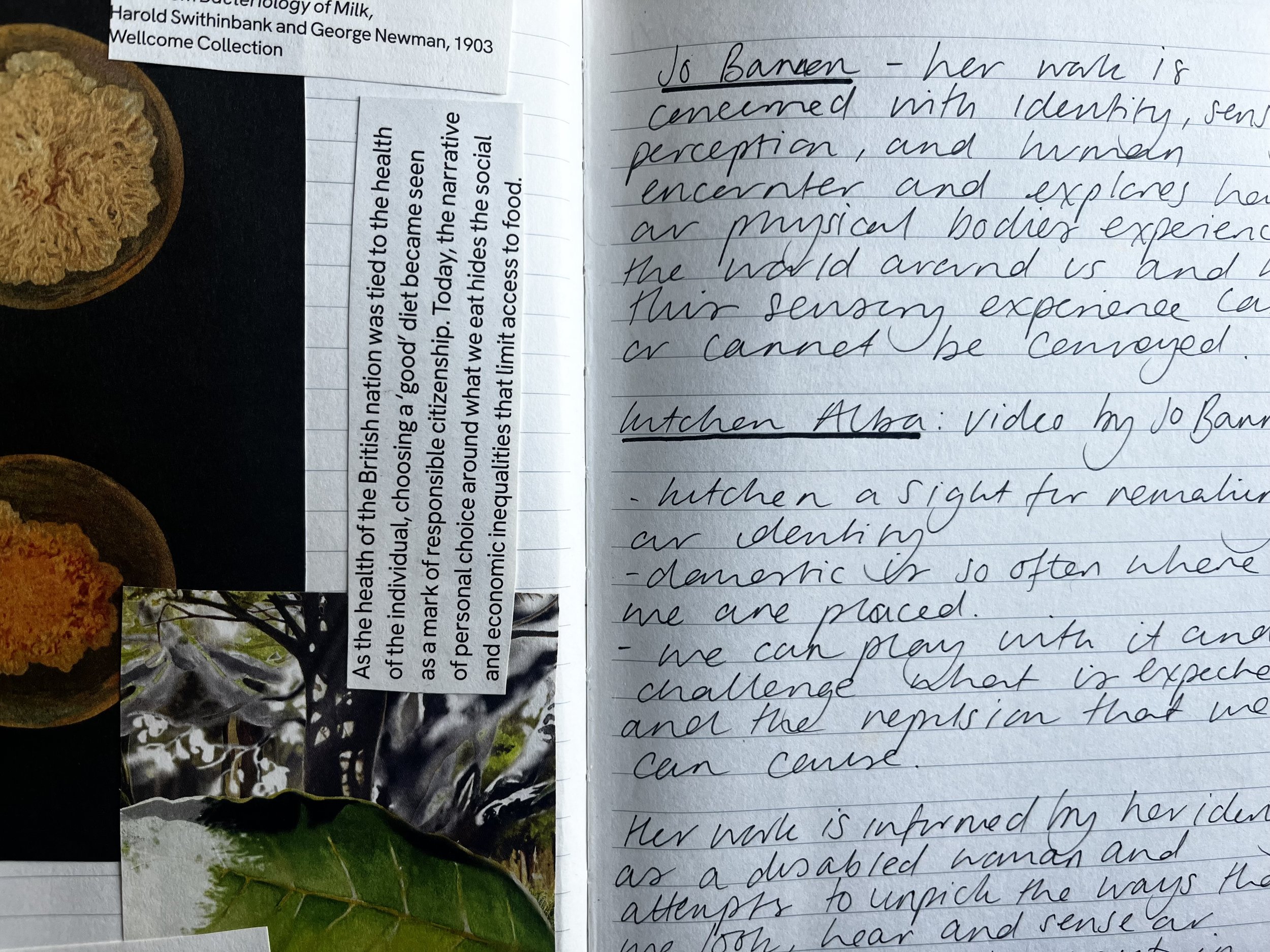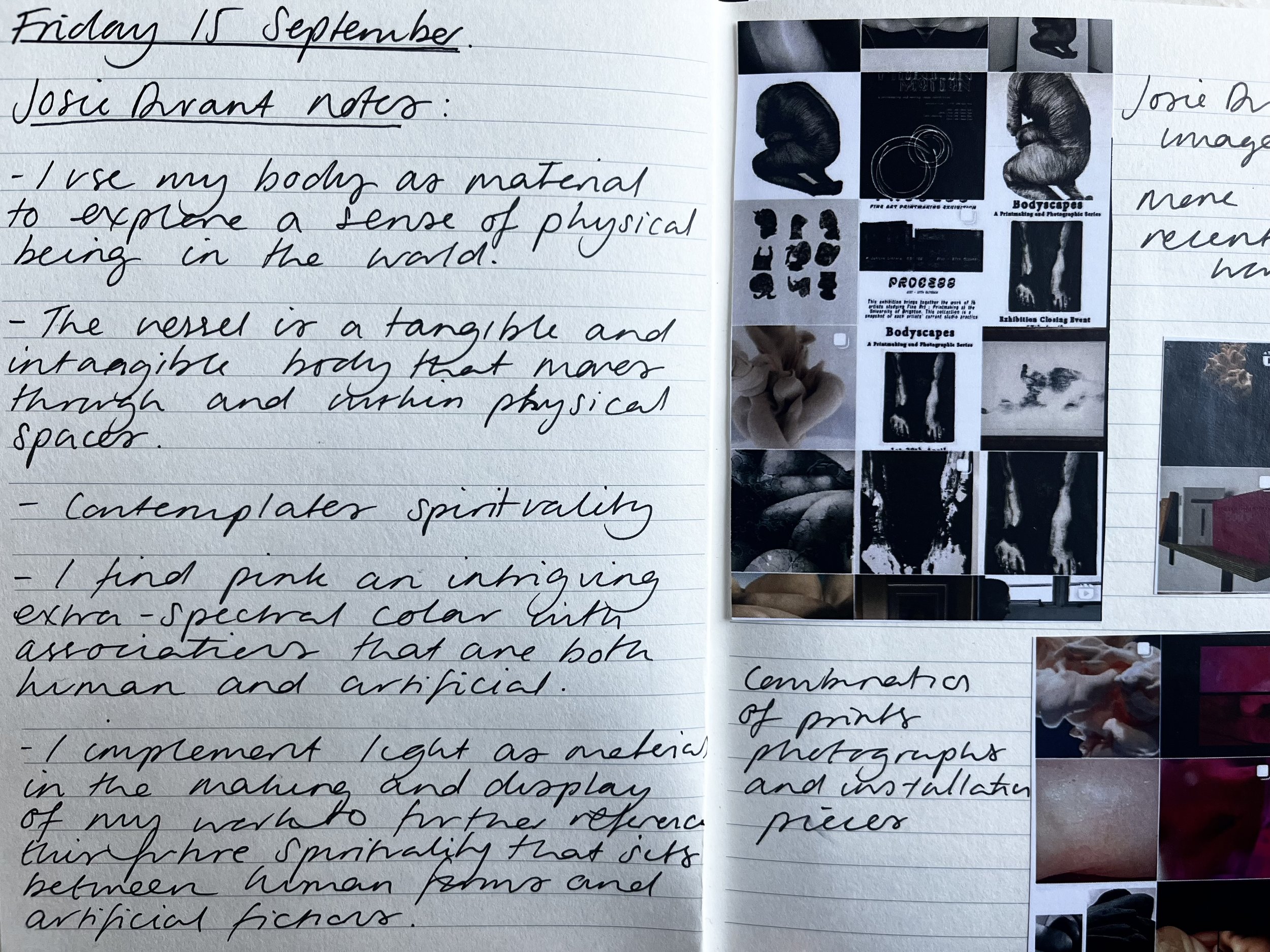Unit 3: Additional Content
Artists that have been relevant to my research
Kiki Smith
“How do we experience our body, what do the beings and things mean that we are surrounded buy, in what way do they define the images that we have of the world, and in what way are they part of the configurations within which our identity is formed- these are the questions on the basis of which the work sets its course.” (Smith, K p.10)
“An altar to these fluids and their aura. The fluids which keep the human body going, appear net to each other on equal terms... pus, lymph and tears are considered as both life-giving and life-saving as well as fatal elements of a complex system.” (Smith, K p.34 )
Ahrens, C & Smith K (1999) Kiki Smith: All Creatures Great and Small, New York, Scalo
Jo Bannon
I came across the work of Jo Bannon when I visited Milk an exhibition at the Welcome Collection.
Within her practice, Jo Bannon focuses on identity, sensory perception and human encounters. She explores how our physical bodies explore the world around us and how this sensory experience can or cannot be conveyed.
In her artist statement she says: “My work is informed by my identity as a disabled woman with albinism and attempts to unpick the ways we look, hear and sense our immediate environment in order to rethink or make unfamiliar these intrinsic human behaviours.” (Bannon, J)
Jo Bannon (2023) Available at: https://www.jobannon.co.uk/ (Accessed: 6 November 2023)
Josie Durrant
Uses her body as a vessel for exploring physical spaces and references spirituality and embodiment.
“I find pink an intriguing extra-spectral colour with associations that are both human and artificial.” (Durrant, J)
Josie Durrant (2023) Available at https://www.josiedurant.com/ (Accessed: 6 November 2023)
Donna Huanca
Donna Huanca’s work comprises of Installations which encompass paintings, sculpture and performances, often referencing the body and skin. She uses materials that relate to the body and stand out for their tactile qualities, such as clothes, skin, silicone body imprints.
“In recent years, Huanca’s work has stood out for its understanding of the body, and of the skin in particular, as a territory where surface and matter converse with architecture, space, and the world. Her performances produce slow-paced choreographies that conjure private rituals and meditations in the gallery space, confronting the viewer with a scenario equal parts uncomfortable and suggestive.”
Donna Huanca (2023) Available at https://travesiacuatro.com/eng/artista/donna-huanca-2/ (Accessed: 6 November 2023)
Image: Catalyst (Wet) 2016
Relevant Exhibitions
Sarah Lucas, Happy Gas, Tate Britain
This exhibition has had a profound influence on my research for Unit 3. Particularly, her use of materials including tights and her reference towards the body and chairs.
Personal images taken at the exhibition
Happy Gas (2023) Available at https://www.tate.org.uk/whats-on/tate-britain/sarah-lucas (Accessed: 6 November 2023)
Milk, Welcome Collection
An exhibition exploring the human relationship to milk and in turn to women and their bodies. It was at this exhibition that I was introduced to Jo Bannon who provided audio description for ‘Backcomb’ (1995) a video by Sarah Pucill as pictured in image 2.
Images: Taken myself at the exhibition.
Milk (2023) Available at https://wellcomecollection.org/exhibitions/Y8VNbhEAAPJM-oki (Accessed: 6 November 2023)
Ongoing Glossary of relevant words and terms
Traces of the body
Works being containers of energy
The relationships between works and their surroundings
Continuous process
Bodily traces
Searching for pressence
That murmur that walks with you and allows you to sit with yourself
Fluid
Movement
Mapping out a space physicality of existing within a room
Physically taking up space when making
Swelling up, getting bigger
Contrast between big and small
Symbols- the door- the boundary between inside and outside, holding in, letting go
The barrier, barrier of the skin and the outside world holding in fluid
Furniture holding you
Longing
Stencils of furniture, ghosts, positive and negative space
Shroud- Trace of the body
Bruising, skin
Lights, neon, hot, hum
The body as a vessel for feeling
Opposed figuration and abstraction
The human body, its concrete physicality, and our ideas of it.
A physical presence in order to understand the reality.
Ideas of our bodies being broken, the digestive system, the heart, body, mind (Kiki Smith, p.16)
The secret lines of communication between life and death.
It not being about the specifics or exactitude its about regaining a connection between yourself and the outside world.











